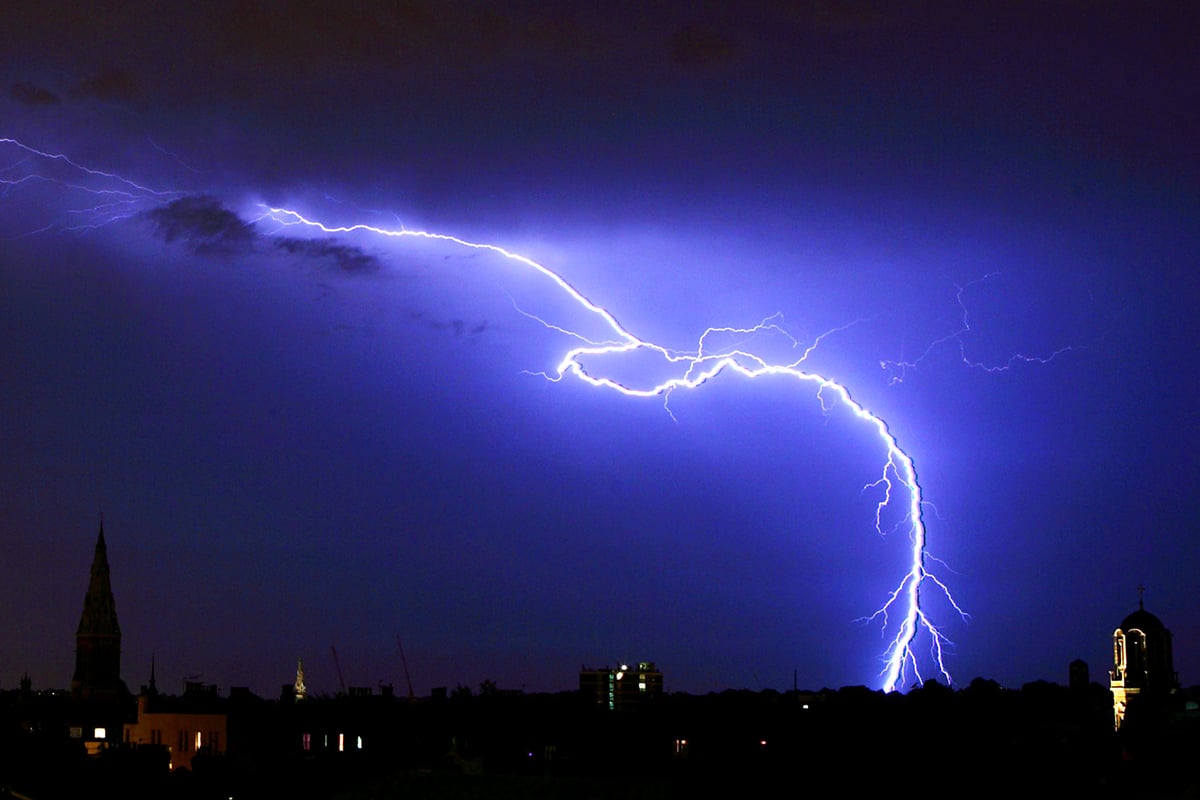London is braced for heavy rainfall and lightning ahead of a potential third heatwave this month, as the Met Office issued a yellow thunderstorm warning for the capital.
Temperatures are expected to remain stable, with highs of 21C today (Sunday) and overnight lows of 14C into Monday morning.
However, rain is forecast throughout much of the day, intensifying overnight, with the heaviest downpours expected between 3am and 7am.
The Met Office’s yellow weather warning remains in place until 7pm today. It states there is a “good chance driving conditions will be affected by spray, standing water and hail,” which could lead to longer journey times by car and bus.
The alert also warns of possible train delays, lightning strikes causing damage to buildings, and a risk of flooding in some areas.
Meteorologist Jonathan Vautrey said: “It’s quite muggy out there for some of us to kick off this second half of the weekend, reasonably damp and cloudy as well because low pressure is in charge throughout much of today.
“There are a few weather fronts around and we’ve particularly got our eyes on this one moving across England and Wales first thing that could start to provide some quite intense downpours of rain… that will generally head south and eastwards and break into showers as we head throughout the day.
“Some of those could turn thundery with hail and quite intense downpours of rain, so it’s worth taking care across eastern England today… There’s a touch more warmth in the south, so 23C, 24C is possible here.
“Those showers will continue to push their way southwards as we move into the evening and overnight period, the wind intensifying a bit through the north channel.
“With that north-westerly wind starting to filter in some fresher conditions, tonight should be a touch more comfortable for sleeping in many places, temperatures in towns and cities dropping back to 12 to 14C.
“There will be a touch of early morning rain across areas of southern England and parts of Wales, and showers will tend to linger around North Sea coasts tomorrow and some further around north-western areas of Scotland.”
